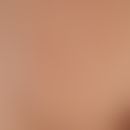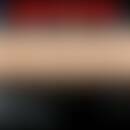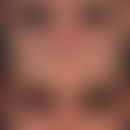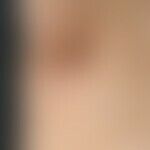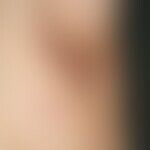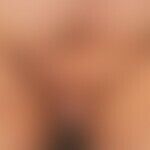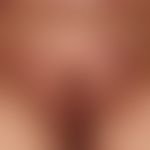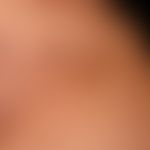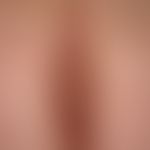Synonym(s)
HistoryThis section has been translated automatically.
DefinitionThis section has been translated automatically.
Probably a special form of acne vulgaris in adulthood, affecting areas rich in apocrine sweat glands and terminal hairs (inverse pattern), with formation of comedones and eminently chronic abscessed fistula ducts (DD: Hidradenitis suppurativa).
You might also be interested in
LocalizationThis section has been translated automatically.
ClinicThis section has been translated automatically.
Multiple, chronically stationary, mostly painful, disseminated, flatly elevated, or clearly raised, blurred, red solid papules, plaques and nodules. Also painful, floating abscesses or deeply sunken, rough scar plates or scar bulges, which can lead to movement restrictions. On close inspection, small sunken comedones are found again and again, which makes it clear that they belong to the acne group.
TherapyThis section has been translated automatically.
In less pronounced cases, a complex external, systemic procedure is recommended:
- Retinoids: The efficacy of retinoids is evaluated differently. Apparently, acitretin is the more effective therapeutic agent compared to isotretinoin.
- Immunomodulating therapeutics: There is insufficient clinical data to date for immunomodulators such as dapsone, cyclosporin A, methotrexate, colchicine or corticosteroids (Schneider-Burrus S et al. 2018).
- Other: Continue to consistently disinfect the area daily. Laser epilation of the affected areas is recommended, complete excision of nodular inflammation if necessary; primary closure if possible; alternatively secondary healing of the defect.
- Comedones: If comedones are detected, consistent removal by means of punch biopsies.
Advanced clinical pictures:
- Drug measures: Adalimumab (Humira®) has been approved since 2015 and appears to be a promising option (Zouboulis CC et al 2019).
- Secukinumab (Cosentyx): This interleukin-17A inhibitor is now approved for the treatment of adults with moderate to severe active acne inversa. In particular for patients in whom conventional systemic therapies have not been sufficiently effective.
- Surgical measures: In advanced disease, the only curative measure is the earliest possible surgical intervention with generous en bloc resection of the affected areas. Even larger defect areas remain open postoperatively and can undergo secondary granulation and epithelialization under careful wound monitoring. If defect coverage is necessary, free grafts should be weighed up against flap plasty. Here too, systemic treatment with retinoids can be carried out preoperatively, 3-4 months before the planned procedure. Postoperatively, this treatment should be continued for several months.
General measures:
- Smokers should be strictly prohibited from smoking.
- Treatment of anemia if present.
- Avoid tight-fitting clothing (e.g. jeans).
Progression/forecastThis section has been translated automatically.
Note(s)This section has been translated automatically.
The entity of the clinical picture is controversial. Relationships to perifolliculitis capitis abscedens et suffodiens, acne conglobata and hidradenitis suppurativa are discussed (see also clinical classification and therapy). The term acne inversa is partly used synonymously with acne triad, acne tetrade and hidradenitis suppurativa.
LiteratureThis section has been translated automatically.
- Küster W et al (1991) Acne inversa. dermatologist 42: 2-8
- Lentner A et al (1992) Clinical appearance and therapy of Pyodermia fistulans sinifica (Acne inversa). Z Hautkr 67: 988-992
- Stein A et al (2003) Acne inversa. dermatologist 54: 173-185
- Wienert V et al (2002) Acne inversa (stage 2). dermatologist 53: 18-21
Incoming links (7)
Anal carcinoma; Chloracne; Pemphigus vegetans type hallopeau; Perifolliculitis capitis abscedens et suffodiens; Pilonidalsine; Pyodermia fistulans significa; Suppurative hidradenitis;Outgoing links (16)
Acitretin; Acne conglobata; Acne (overview); Acne tetrade; Acne triad; Adalimumab; Ciclosporin a; Colchicine; Dadps; Glucocorticosteroids; ... Show allDisclaimer
Please ask your physician for a reliable diagnosis. This website is only meant as a reference.
